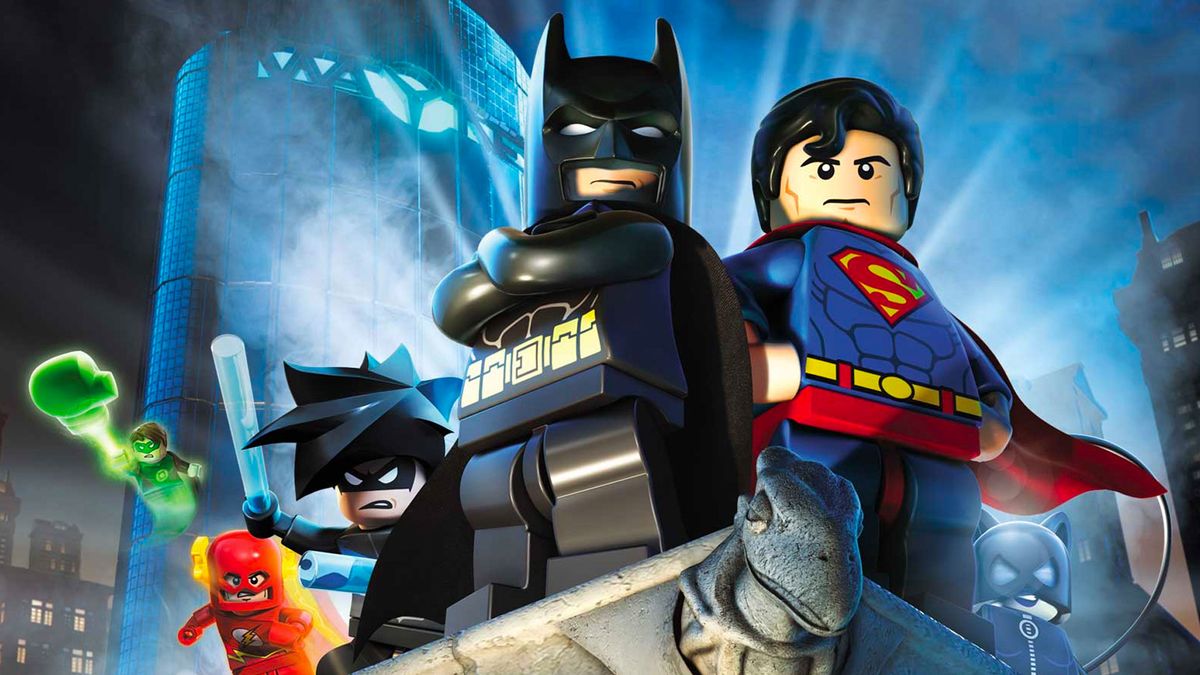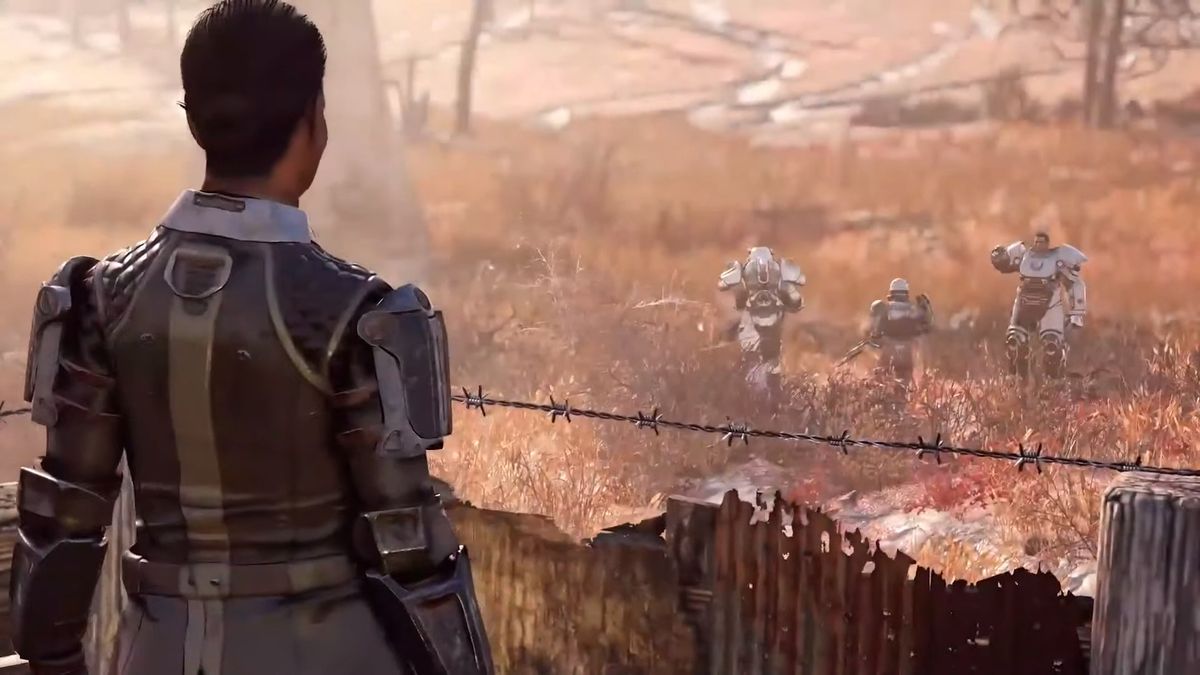A load of waiting

Loading screens are a necessary evil of modern gaming. Ever since shiny magic discs became the standard method of game delivery, the whole process of that delivery has become a tad slow. The technical reason for this is that those gleaming circles of light and colour are actually little portals to the game-realm, which transport whole gaming worlds to your TV when activated by the runes inside your console. Its been necessary since things went 3D, but ye gods does the incantation slow the process down.
But loading screens don’t have to be dull. 90% of them are, of course, but that’s no excuse. There’s such an increasing number of creative, artistic, interactive and even bona fide useful, logistical uses for that thumb-twiddling fun-delay that a plain black screen and a spinning bit of production art just is just no longer acceptable. Nowadays, games really should be thinking about doing one of the following…
Give your loading screen MEANINGFUL gameplay

Playable loading screens arent a new idea. Theyve been around since the Commodore 64, a fact that makes Namcos 90s patenting of the idea seem like a brazen case of absolutely no-one paying attention whatsoever. Rarely though, do playable loading screens provide anything more than a brief, unrelated distraction during that awkward period of time between Too long to do nothing and Not long enough to go for a wee.
But rarely, as anyone with even a basic grasp of English will understand, does not mean never. Okami was perhaps the first to give its loading screen play tangible, real game value, its button-tapping minigame allowing the player to accrue more of its Demon Fang currency. Rayman Legends drops you into a silhouetted transitional world on the way into levels, within which youre free to run, leap, and practice a few advanced leaping techniques. Sometimes though, youll find a flying heart-container. Smash it before the level loads, and youll start with a health buff. And then of course, theres Bayonettas excellent training dojo, which smooths the edges of the games progressive combo system by providing a safe, happy place in which to try out new moves.
Tap into bored-gamer psychology

Its a well-known fact of gaming–not a true one, but that never stopped anything from being a fact–that the faster you mash the A or X button, the faster a loading screen will load. The practice is hardwired into each and every one of our very gaming souls. Always has been always will be. So why not take advantage of that?
Whatever happens, were going to be mashing buttons during loading screens until were pointlessly stabbing the splintering tips of our thumb bones into scratched, shattering plastic. So knowing that, why not make the process a little more satisfying? At least give us a bit of tactile feedback for our futile self-delusion. The original Devil May Cry series understands the logic of this manifesto, rewarding button mashes with the slashing and shooting of the the accursed harbinger of waiting (ie. the Loading logo), to immensely cathartic effect. On longer loads you can even KILL IT DEAD. Which probably just exacerbates the delusion, but whatever.
Give the stats screen a reason to live

Pity the poor stats-gathering developer. He has a job as complex as that of anyone else on the team, collecting and juggling every gameplay statistic conceivable like a big informational octopus. Not only that, but he then has to create an attractive stats screen to display all of the players interactions, reflecting all of their murderous acts back at them like some kind of macabre mathematical mirror. And you know who cares? No-one.
So its good for both him and the intermittently bored, loading screen-bound player to display the fruits of their combined work during the code-crunching wait. Codemasters Dirt 2 does an excellent job, by providing the kind of fully interactive, highly polished stats offering so successfully ignored in many a game menu, creating the perfect storm of mildly interesting content and short-term player boredom required to actually make said numerological run-down appear really, really interesting indeed.
Give the loading screen its own narrative purpose

Hmmm, we have all this extra storyline and character exposition to squeeze into our relentlessly fast-paced action game, but nowhere to put it. If only we had some extra chunks of spare play-time in which to drop this stuff. 20-30 seconds at a time would do it. Oh hang on
Yep, loading screens are your narrative friends. If youre happy to eschew traditional, glossy, full-motion cut-scenes in favour of something more modest (and therefore avoid the whole loading-screen Inception problem of having to load the thing masking the loading), then you can use the dead time to deliver great story-nuggets and swathes of extraneous atmospheric texture. Think that simpler narrative delivery cant stand up to the joys of shiny computer cartoons? Take that problem to Mr. Max Payne. Hell drown out your argument with the rage of a thousand screaming angels, piercing the night cold air like a bullet through the surface of a frozen lake.
Use loading screens to help the forgetful player

You know what its like. Youve been playing a vast, three-million-hour JRPG for a few weeks. Youve finally got under the skin of the thing and formed a heartfelt attachment to it characters and gameplay mechanics. Youre obsessed with the story, youre getting three hours sleep a night, and you are categorically in this for the long haul. And then, for no reason you can possibly rationalise, you stop playing one day and dont go back to it for a month. It happens to the best of us. No-one knows what causes it, but the Germans probably have a really long word for it.
You come back, and all of the obsessive attachment to the world and story you were playingnay, livinghas been completely forgotten. Where are you? Who are you? What are you doing? Whos that guy? Where in the hell are you supposed to be going next? Thus, you wander around the overworld map for several hours, investigating every available town and mountain range, waiting for something to happen. If only there was some convenient place the game could tell you what was going on. Somewhere you couldnt avoid before playing. That would be cool.
Justify your loading screen in-game

Loading screens are a stinking great fourth-wall wrecking ball, gleefully and mercilessly smashing your precious illusions every chance they get. The best way to avoid those obnoxious breaks in your otherwise immaculately constructed video game reality? Take your world-building to the next logical level and justify everything on-screen as part of that reality.
Assassins Creed is great at this. Given that the majority of play takes place in a simulated digital world, the series has become increasingly meta with its presentation over the years, culminating in Assassins Creed IV: Black Flags deliriously self-referential video game within a video game approach. The series has always disguised its loading screens (and level boundaries, and player deaths, and pretty much every other traditional game mechanic) as parts of the Animus interface, but it gets even cleverer in ACIV. One later instance of loading even plays upon in-game events, blurring lines of reality between game, real world, in-game game and in-game real world, as an increasingly less sane Edward freaks out and collapses during an Animus load, culminating in his insertion into the historical simulation in exactly the same position that he falls.
Hide them in the game

Its 3am. In the still darkness of the night, a disturbance shakes you awake. You think its your imagination at first, but after a moment of concentration focuses your brain, youre sure you can hear something. Theres a scraping. And an intermittent thudding. Its getting closer, becoming louder and louder as it slumps along the hallway to your room. Now its scratching at your door. Theres a sickening guttural moan. The door bursts open and
Loading. Please wait.
Yeah, visible loading pauses kill the tension of a horror experience instantly, so Resident Evil hides its loading within the game. Not only do those door-opening animations mask the loads between rooms, but they also add a crapton of extra atmosphere. Make your loading screen a feature rather than a necessity, and hide it in plain sight.
Just put Patrick Stewart in all of them

The absolute best way discovered–thus far–of making a loading screen worthwhile. Simply, Castlevania: Lords of Shadow has it nailed so hard that I cant fathom why this hasnt become the de facto method for all video games since. There is no excuse. It must become an industry-wide practice.
Starting with the narrative loading-screen approach, Vania does an excellent job of using its technologically enforced level intros to induce a wonderfully literary vibe to the games linear quest. Theres a sense of progressive journey that almost makes working through the game feel like playing a novel. But far better than that is the simple pleasure of its narration. Castlevania, in an inspired twist of uncomplicated genius, simply has Patrick Stewart say things to you for a minute or so. The deliciously straight-faced, increasingly doom-laden writing helps a great deal of course, but frankly we could hear that plummy Yorkshire gravitas reeling off a rudimentary home-plumbing guide and wouldnt think about hitting start once.
But wait! There’s an even better method! It’s foolproof…
Go back to cartridges

Seriously guys, lets sort this problem out once and for all. Lets go back to good old, tried and trusted cartridges next-next-gen. In fact screw it, theres still time for Microsoft and Sony to release cartridge slot add-ons for the Xbox One and PS4. Optical media has had its chance and its brought us nothing but pain.
Okay, so the cartridges would now be the size of suitcases, and games would cost 190 each. But just think of all of those precious seconds youd save. Cumulatively youd probably reclaim enough time over a year to read a couple of haikus or something. Whos with me? Yeah? No? No-one? Oh well. Your loss. Im going to fire up my SNES. Ill have finished Final Fantasy VI again before youve even installed Lightning Returns.
Press any button to continue

So there’s my round-up of the best ways to use a loading screen right now. But have you thought of any I’ve forgotten? You’re bound to have. This is an article on the internet, so I’m surely wrong about something. And do you have idea innovative new sci-fi ideas of how to make loading less crap in the future? Drop all of that in the comments.
And while you’re here, check out some of our other content that finds intrigue in the seemingly mundane. The 12 most important desks in games (opens in new tab) would be a good port of call, as would 12 video game skyboxes that are far cooler than you think (opens in new tab).
 Game News Video Games Reviews & News
Game News Video Games Reviews & News



